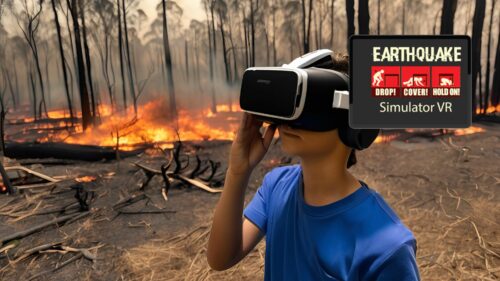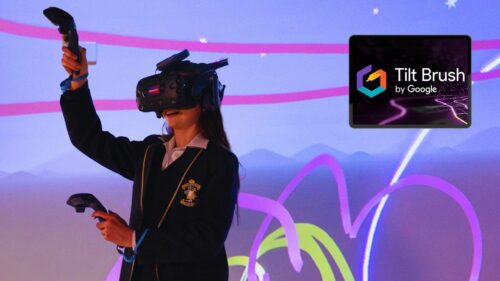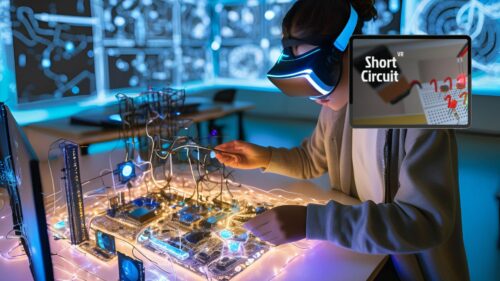Task Summary
Visualising 3D Mathematics is often difficult when viewed in a 2D representation (e.g. on a page). Using Geogebra Mixed Reality and Cospaces, students will be able to view 3D solids in a unique way to understand their features and solve related problems.
Learn MorePreparation
Students are expected to:
- Have some background knowledge on using Immersive Reality (IMVR) Headsets.
- Have some background in using Cospaces
- Have background skills in solving volume problems involving simple and composite solids
Teachers should make sure that:
- Devices are charged (if using)
- Presentation slide deck has been checked.
- A copy of the Student Digital Notebook has been distributed to students and they have downloaded/ made a copy for themselves.
- Students are divided into pairs or groups, depending on how many devices are available. A suggested rotation cycle may be:
| Group | Round 1 | Round 2 | Round 3 |
| Group 1 | IMVR | Applications | AR |
| Group 2 | AR | IMVR | Applications |
| Group 3 | Applications | AR | IMVR |
This may differ based on student numbers and number of IMVR stations
Learning Sequence
Station 1 – IMVR
In groups, engage with the the various prompts available on GeoGebra Mixed Reality, including:
- 3D Solids
- Mobius Strip
- Lissajou Curve
Students answer the questions on page 3 of the 3D Mathematics – Student Digital Notebook
Station 2 – HHVR
Students use Cospaces to recreate a 3D solid composite problem of their own creation or one found in their learning resource (e.g. textbook, online maths software, etc.). The composite solid should include
- At least two 3D solids
- Relevant measurements
- What will the age groups be?
- What facilities will be required?
How to create a 3D composite solid in CoSpaces
- Select “Merge Cube”
- Select “Library”
- Select “Building”
- Select “Three-Dimensional” to import various 3D solids
- Select “Flat” to annotate relevant measurements
Station 3 – Applications
Students will research the internet for applications of calculating surface area and volume. They will answer the following prompting questions:
- “Calculating surface area can help in real life situations such as”
- “Calculating volume can help in real life situations such as”
Following this students will come up with a problem for other students to solve involving the situations they have come up with.
Download the PDF for more information



